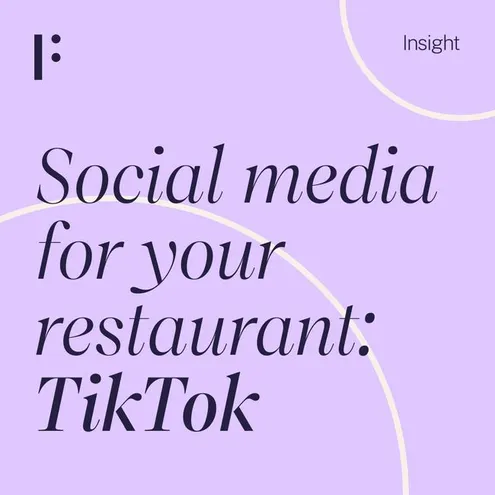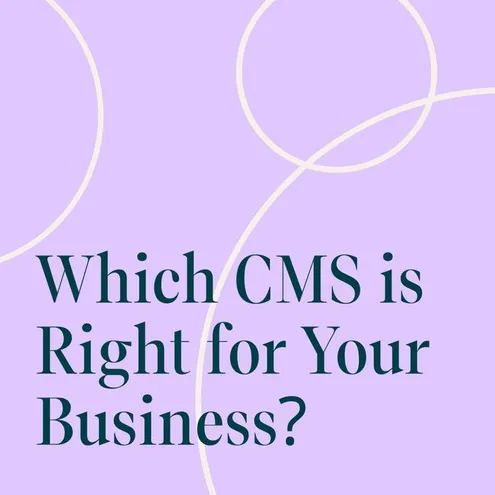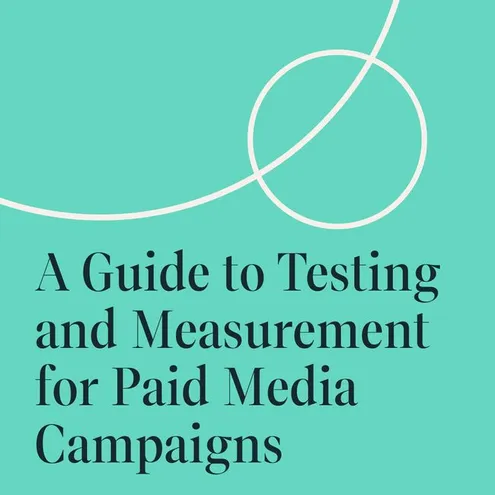22/11/21
Strategy
The hospitality industry has had two incredibly challenging years. With lockdowns forcing closures, businesses have struggled to stay afloat. Because of those challenging circumstances, having a solid marketing strategy in place is more important than ever.
What is a hotel marketing strategy?
Your hospitality marketing strategy is a comprehensive, high-level plan for reaching out to prospective customers and turning them into guests. Your marketing strategy helps you identify the most promising opportunities for your hotel or restaurant. Marketing budgets are finite, and a clear strategy allows you to allocate your resources most efficiently.
Most marketing strategies look at least one year ahead, possibly even longer. They become a reference document throughout that period to help you check your progress.
Marketing Strategy or Marketing Campaign?
Consider your marketing strategy as the umbrella for all of your marketing activity.
A marketing campaign, on the other hand, refers to a set of marketing activities designed to promote one specific area. For example, a restaurant planning to launch a seasonal tasting menu could plan a marketing campaign specific to that menu launch. Throughout the year, the restaurant will most likely run other campaigns to promote different aspects of the business. Your strategy could be made up of many different campaigns that you’ll run throughout the year.
Defining your Hotel or Restaurant's Target Market
Your target market can be defined as the group of people your hotel or restaurant would like to attract as customers. This group will usually share some similar characteristics while remaining fairly broad.
Figuring out your target market is difficult, but so so important for the success of your hospitality business. If you don’t know who you’re trying to reach, it’s impossible to carve out a strategy to reach them… Well, a strategy that works at least!
Identifying your target market involves considering your existing customers, your offering, and your competitors. Analysing those three will give you a good idea of how your business fits into the market.
Target Market vs Target Audience
While your target market refers to the entire group of customers you want to reach with your marketing activities, a target audience is a subset of this wider group. Target Audiences should be identified for each marketing campaign that you run, or each specific channel you use.
For example, if you are a hotel offering both gourmet dining at your restaurant, and a range of spa treatments, you would most likely find that they are attractive products to different sections of your target market. Your campaign to promote the spa treatments would target a different audience than your fine dining campaign.
To identify each of your target audiences, you need to segment your target market.
Segmenting Your Target Market
Segmenting means dividing your target market into individual target audiences. This allows you to drill down in more detail and understand your audiences better. Based on that, you can target potential customers more efficiently.
The goal of segmentation is to identify who your offering appeals most to, and who is most likely to buy it. Hotels and restaurants can segment their target market according to different criteria. Here are some of the most useful ones.
Demographic
Demographic segmentation criteria that are useful to the hospitality industry include age, gender, and income level. Family status and occupation are also useful to define your target audience.
Beyond these, many marketers consider a person’s educational level and ethnic background, although those may be less relevant to hotel and restaurant businesses.
Geographic
Consider your potential customer’s location. It’s pretty unlikely that a customer will travel for 3 hours just to eat at your restaurant, but adding local focus to your marketing activities will make sure you’re targeting an audience within your area.
On the other hand, almost the opposite could be true for hotels! No one stays in a hotel in their own city. But whilst only two years ago, many people were travelling frequently, hopping countries and crossing continents, travel restrictions have made this far more difficult. It’s important to consider whether your target audience has changed to be slightly closer to home.
Behavioural
Behavioural segmentation helps you distinguish between target audiences by looking at how they interact with your brand.
As a hospitality marketer, you may consider brand loyalty (are they repeat guests?) and the frequency of visits to your place. Perhaps your restaurant is particularly popular for special occasions? Understanding which occasions people are likely to visit you for allows you to target them more specifically.
Psychographic
Psychographic factors consider the personal characteristics of your customers. What is their lifestyle like, and how would a short break in your hotel fit into that lifestyle?
To segment your target audience with the help of psychographics, you could consider attitudes, deeply-held values, interests and hobbies to understand your customers better. Knowing these factors helps you appeal to them - if your target audience are big believers in a healthy lifestyle, you probably don’t want to have a menu filled with greasy burgers.
Understanding the Hospitality Sales Funnel
Your sales funnel is the process that takes your customers from never having heard of your business to becoming a customer.
Funnels can be divided into stages, with each stage bringing your prospect closer to becoming a customer. Within the hospitality industry, marketing experts generally consider four main stages: awareness, interest, consideration, and conversion.
It is worth adding a fifth stage – retention, especially if you are looking to build repeat business. Retaining happy customers generally requires less marketing effort than enticing entirely new prospects through your sales funnel.
Separating the individual stages allows you to understand where prospects drop out of the process and why. For example, if your hotel has had plenty of customer enquiries but few bookings following a marketing campaign for weekend breaks, you know that your funnel has worked well through to stage three. Unless the reasons for the low conversion are obvious, you should be focusing your efforts on investigating why customers haven’t been converting.
Identifying goals for your hotel or restaurant marketing
No marketing strategy can work effectively without clear goals and objectives. Whilst marketing goals often refer to your higher-level vision, marketing objectives are more concrete. Goals answer the question of why you are trying to achieve something, whereas objectives address how exactly you will achieve your goals.
Objectives need to be SMART: specific, measurable, attainable, relevant, and time-bound. Following all of those stipulations means that your objectives are realistic and focused, they can be quantified and you can hold your marketing accountable.
Simply saying “we want to increase overnight stays” is not yet a smart objective. Instead, saying “we want to increase weekend stays of a minimum of two nights by 20% within six months” gives you a more specific target to aim for.
Research Your Competitors
Researching your competitors is so important, both before you start a business and at regular points throughout the year to help you gain insights into your market.
Competitor analysis helps you identify what customers choose to buy from others around you, and why. This allows you to compare their strengths and weaknesses to those of your own business. You learn more about their products and services as well as their marketing tactics.
As a hotelier, you benefit from staying in other hotels and take inspiration away from that. Remember, though, the hospitality market is huge, especially as things start opening up once more. Copying your successful competitors may seem like a tempting idea, however, often this only serves to divide a target audience. It may feel like a quick win initially, but in the long term, your business benefits more from carving out a niche for itself.
Consider competitor research as a springboard: learn what others are doing well and use this knowledge to identify opportunities of how you could outperform them.
Build Your Hotel's Brand
Your brand is your hotel’s or restaurant’s identity. A successful, consistent brand permeates the look and feel of your establishment. It is also reflected in every piece of communication, internally and externally.
Having a strong brand makes you more recognisable in the market. Your brand allows customers to identify you easily and distinguish between your business and your competitors.
Far beyond simply giving a business a visual identity, consistent brand identity adds credibility to your organisation and builds trust between the organisation, staff, and customers. Branding means becoming a known entity to your customers – they know what to expect from you. Managing those perceptions is what successful branding does.
Find Your USP to attract your ideal guests
A unique selling point (USP) is a benefit customers receive from your business that your competitors cannot offer.
It would be rare for your business to be the only hotel or restaurant in town but identifying something that you do better than those around you will help you succeed. Having a USP is not a new concept. The term was first coined by advertisers in the 1940s when consumer goods manufacturers were competing in the advertising market.
Since then, both the concept and competition within the hospitality sector have evolved. However, having a USP continues to help your company set itself apart from others. For example, being the only restaurant offering Thai food in town sets you apart from your competitors.
Internally, a strong USP can help your team understand the company’s mission and its place in the market.
Your Marketing Channels
The term “Marketing Channels” refers to the paths through which you choose to reach your target market. They create a connection between your business and your customers.
Over the past few decades, digital marketing channels have grown in importance. Digitisation and automation have made a bigger choice of channels available to more businesses, regardless of their size.
Here is a selection of several channels that work well for hospitality businesses.
Your website
Websites have effectively replaced business cards as a must-have for any organisation.
A website not only gives you a presence online; it builds credibility and establishes trust in your hospitality business. In addition, your website is the perfect place to showcase your hotel or restaurant and allow prospective customers to research it when it is convenient for them.
SEO
Search engine optimisation (SEO) goes hand in hand with having a successful website. Even the most well-designed website can only be of limited use to your business if search engines (and your customers searching on them) cannot find it.
SEO works on optimising the individual pages of your website to help your business rank higher on search engine results pages. These organic rankings are part of a long-term marketing strategy. SEO takes time to show results but is a powerful and cost-effective marketing channel.
Content Marketing
Content marketing focuses on creating and distributing valuable and consistent information to prospective and existing customers. Rather than pitching your products and services directly, you are helping customers solve problems.
How does that work in the hospitality industry? As a restaurant’s head chef, you could share seasonal recipes, for example. Or as a hotel, you could build out a selection of articles around why your location is the ideal holiday destination. Your content is then shared through your marketing channels.
Content marketing supports SEO activities by creating and encouraging backlinks to your website, and establishing your website as an authority in your field, whether that's holidays to your city, or a type of cuisine. The more that Search Engines like Google see your website as an authority, the more likely they are to rank you higher in search results.
Search Engine Marketing (SEM)
Search engine marketing is the paid-for equivalent to SEO. One of the best-known SEM activities is pay-per-click (PPC) adverts on search engines like Google or Bing.
Like SEO, SEM is based on the keywords your customers are likely to search for. If someone enters one of the keywords you are targeting, an advert is placed at the top of the search results page, above organic, SEO results. You pay only when a user clicks on your advert.
SEM complements SEO, especially if your website is relatively new. Whilst you are waiting for your SEO activity to gather momentum, PPC adverts can help your brand appear in front of prospective customers.
Remarketing
Remarketing has become a popular form of digital marketing that targets potential customers who have already shown some interest in a particular brand.
As a hotelier, you could choose to display adverts to people who visited your website but did not sign up for your newsletter or make an enquiry. You could also go as far as to reconnect with a potential customer who got 80% of the way through your booking process but then failed to complete the booking. Your remarketing ad could remind them that they almost finished booking, or offer them further incentives to complete the process.
Social Media
Hospitality businesses can reach more than three quarters of the UK population via social media. As of January 2021, the country had 53 million active social media users. This number puts the UK well above the global average of 45% of social media penetration.
As a hotel or restaurant owner, you have a huge opportunity to reach individual target audiences through social media. Plus, social media usage continues to grow worldwide. More than 3.6 billion people used these channels in 2020. This number is set to grow to more than 4.4 billion by 2025.
Getting started with social media marketing now, means your activity can grow with your audience.
Instagram, Pinterest, Facebook
There is no one-size-fits-all solution when it comes to social media marketing.
Different channels attract different audiences and offer different ways to connect. Which channel works best for you depends on your target market. In fact, you may find that individual target audiences are more likely to engage with your brand through different social media channels.
Facebook remains the largest social media network with more than 2.3 billion monthly active users, whereas Instagram currently has just over one billion. Both networks continue to grow, but Instagram has been more successful at attracting younger users. It is also somewhat more mobile-friendly.
Visual bookmarking platform Pinterest has 444 million active monthly users worldwide and excels in user engagement.
Paid Social Media
Just like search engines offer options to generate organic and paid-for traffic, so do social media platforms.
At this moment, Facebook offers marketers the widest choice of sophisticated advertising tools and a wide array of measuring tools. That means you can see exactly what you spend your marketing budget on. This is important for marketers in a time of tight budgets.
Instagram is extending its advertising options, and can be managed through Facebook’s Ads Manager, meaning that it’s incredibly easy to set up and monitor advertising across both platforms. Several other reasons make this platform a good choice for hotel and restaurant digital marketing strategies, for example, the high level of engagement the platform continues to attract or the visual nature of Instagram being the perfect way to show off your locations.
Native Advertising On Social Media
Native advertising or sponsored content is a form of digital advertising where your advert is designed to look like the surrounding editorial content.
Most other forms of advertising are disruptive – think about commercials during a TV programme. Native advertising does the opposite. It aims to expose the user to advertising messages without being immediately visible and sticking out from the content they were already looking at.
For example, a native advert in your Instagram feed would look like it is just another post, with some small text below the logo to specify that it is sponsored content.
Influencer Marketing
Influencer marketing has been a buzzword for several years, and although it may seem daunting, it can be a very effective part of a hospitality marketing strategy.
This type of marketing uses endorsements and product mentions from individuals that have a large following in a specific community. They are often considered experts in their niche and their endorsement of your brand extends their credibility to your business.
Analyse Your Strategy's Performance
Is your marketing strategy working for you? In many cases, there is no blanket answer, especially when you are new to hospitality marketing.
A more useful question to ask is, which parts of your strategy are working? And where is there room for optimisation? In order to answer any of those questions, marketers must measure and analyse the performance of each part of their strategy.
Important Key Performance Indicators (KPI) to consider
Assuming the goals and objectives you determined earlier were SMART, you should already have a good idea of what conversions are most important to your business. Those are the conversions you are now analysing.
Revenue
Measuring revenue should be part and parcel of what your finance department is doing. Increased revenue is a good indicator of successful marketing activities, but it is equally important to consider profit and loss.
If increased revenue has come at the cost of tighter margins you may need to reconsider your business model as a whole or review specific areas more closely.
Cost Per Conversion/Action (CPA)
Conversion Rate is a great measure to determine the ratio between views of an advertisement and the number of successful conversions. Within the hospitality industry, conversions can be hotel and restaurant bookings, but they can also be newsletter subscriptions or social media engagements. And CPA (Cost per Action) helps to determine the monetary value of these conversion actions compared to the cost it took to achieve them.
Analysing CPA allows you to understand how much it costs your business to acquire each customer. This helps determine which marketing activities are not only creating a lot of “buzz” but are cost-effective at the same time.
What you consider to be an acceptable cost per conversion depends on your objectives, marketing budget, and other factors, like average revenue generated by a single customer. A luxury hotel will have a vastly different acceptable cost per conversion than a restaurant.
Audience Behaviour
Measuring audience behaviour is another useful KPI for hospitality marketers. Tracking your customers’ behaviour helps you understand patterns or changes, and react to them.
In a restaurant, you can see the average spend per guest and how this varies throughout the week or the year and you can keep track of repeat bookings, too. A hotel may notice that following one marketing campaign, the length of stays booked was 5 nights, compared to an average of 2 nights after a different campaign.
Perhaps guests who book romantic weekends away, spend more in your hotel spa than families do, whereas families spend more per head on food. Understanding these differences allows you to better serve your customers.
Key Takeaways For Building An Effective Hotel Or Restaurant Marketing Strategy
- Creating an effective digital marketing strategy for a hospitality business starts with understanding your audience.
- With your target market well defined and segmented, it is important to know where you fit in the market and how your business can stand out from its competitors.
- Next, reach out to your audience through the most valuable digital marketing channels. Remember, if you have diverse target audiences, using diverse marketing channels will help you reach them effectively.
- Never underestimate the importance of analysis: after all, you need to know which parts of the strategy are working and which could do better. Digital marketing strategies should always be flexible to be adapted when something is not working.









